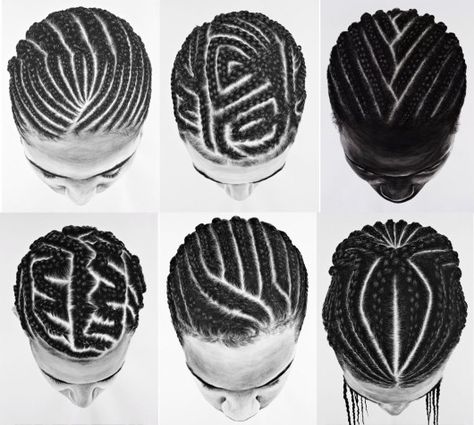
support@yorubalibrary.com
+2348073529208, 07038599574

Yoruba is an independent ethnic group having unique heritage and cultures that are quite different from other ethnic groups in Nigeria. The foods, clothes, greetings, attires, and even hairstyles are peculiar. Today, we shall be showcasing different hair styles of Yoruba people, and we will focus mainly on women hair on this very page.
As adage says “Irun l’ewa obinrin ” (Braiding is the beauty of womanhood). Yoruba people have different hairstyles for women, our women are very creative in terms of their physical appearances which includes their fashion and hair styling, which of course make them to look naturally beautiful.
There are two basic methods of styling hair among Yoruba women. The first one is called “Irun Didi” and this is the hand plaited style with nothing attached while the second one is known as “Irun Kiko” which is tied with either thread or tiny plastic materials. Without wasting time, let’s dive into names of different women hairstyles in Yoruba land.
ADE-OBA: This style is made to look like a crown. ‘Ade-Oba’ literally means ‘King’s crown’. In the olden days, this type of hairstyles is often reserved for king’s wives in Yoruba land.
KOROBA: The braiding of this evergreen hairstyle radiates from the centre of the head to all parts, like an upturned bucket or container. Koroba is a very unique Nigerian hairstyle. The appearance of this hairstyle is often like a basket facing down.
IPAKO ELEDE: This means ‘occiput of a pig’. In ipako elede hairstyle, the styling starts from the back, but everything eventually ends in front. When scaling the braids, the non-linear contours of the head are followed.
PANUMO: This directly translated to ‘Shut Up!’, it starts from two different points, one from the forehead and one from the back. The two meets at the centre of the head, leaving a little hole. In the olden days, this type of hair is often braided when two rivaling wives want to settle scores with one another.
PATEWO: This traditional Yoruba hairstyle is plaited like a hand made to clap. ‘Patewo’ means ‘To applaud’. It is adorned by female of all ages and social status.
OJOKOPETI: This means ‘Rain is not beating the ears’. The styling technique of this is in such a way that it starts from one ear and then moves across to the other ear.
SHUKU/SUKU: This particular hairstyle is named as a result of the hump formed on top of the head after braiding the hair. The appearance of this hairstyle is like that of maize cob (Shuku Agbado). There are many variations of this popular hairstyle. It is adorned by school girls, teens, young ladies, and married women.
ARO META: This is woven in to three big heaps; a hump at the front and two at the back of the head.
OGUN PARI: This means ‘end of the war’. The hairstyle was created to mark the end of the Nigerian Civil War. The natural hair is divided into large sections, and plastic plaiting thread is used to make long, thin braids. The braids are then bent into large arches, connecting the thin tops to the bottom of adjacent braids.
KOJUSOKO: This hairstyle is made by plaiting the hair with plastic materials that have all of its long strands directed to the front. Kojusoko is directly translated to ‘face the husband’.
ORISHABUMNI: This style is achieved when Shuku is blended with Koroba. This is the popular hairstyle which the late actress Fola Aremu popularly known as Orishabunmi always had on her hair during her lifetime.
KOLESE: This means ‘Without Leg’. In this knotting style, each knot originates from the front and runs to the back of the head, not too far from the neck.
ONILE GOGORO: This means ‘high-pitched building’. Hence, this style is formed by twisting the hair to form a tall building like a skyscraper.
Discussions and contributions are welcome using the below comment section.